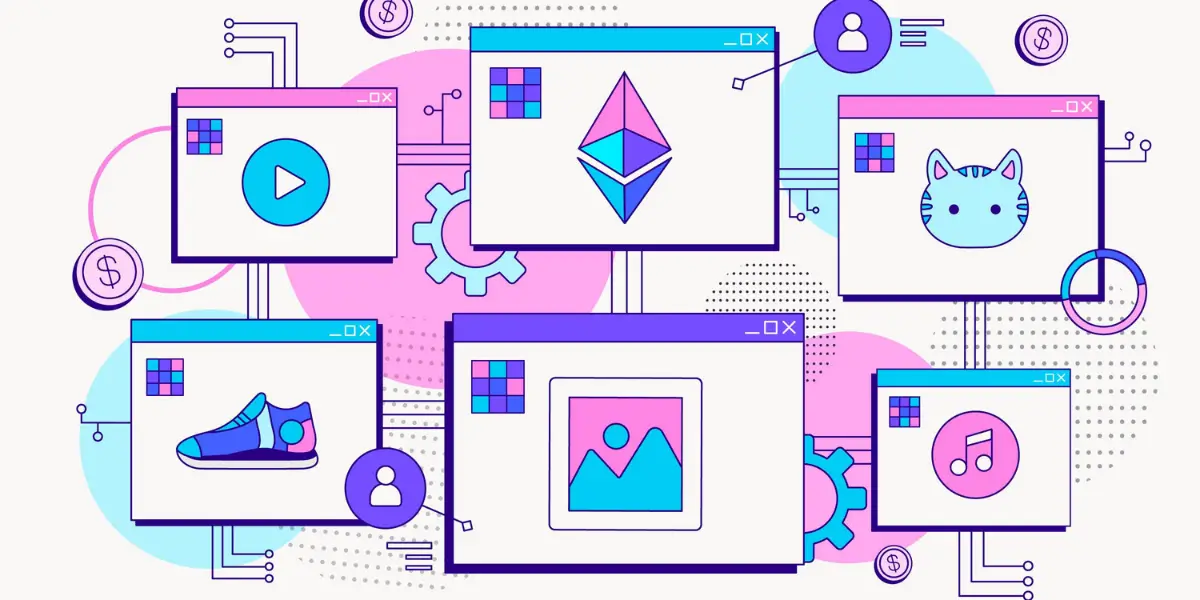What is NFT?
NFT is the form of cryptocurrency token that exist to represent the digital ownership of any items found digitally. It may be art, music, sports, virtual land, photos etc. Being unique identity and ownership of an NFT is verifiable via the blockchain ledger. They were first launched on the Ethereum blockchain, but other blockchains including FLOW and Bitcoin Cash now also support them.
Whether the original file is a JPG, MP3, GIF or anything else, the NFT that identifies its ownership can be bought and sold just like any other type of art – and, like with physical art, the price is largely set by market demand.
How NFT Marketplace Technology works?
Nft marketplace is created for creating, exchanging, trading and selling NFTs in a peer to peer manner. The marketplace enables creators to create their own NFT assets and make them visible in the profiles as a collection. This is what called as NFT collections.
When users in the marketplace signed up, they agreed to abide by the terms and conditions of that marketplace.
There are specific set of guidellines availble which changes with every marketplace. NFT's are created in standards of ERC -721 and ERC 1155. Because these ERC standards have features like interoperable functions and open source protocols so anyone can create NFT in freedom.
Anyone can develop their own NFT marketplace in private or make it as a public like opensea. For example, Veefriends is the NFT collection project developed by Gary Vaynerchuk. The NFT collection allows users to have premium benefits in the Gary Vaynerchuk' community club. If you are in the mind of owing your NFT marketplace or collection, get in touch with us for faster development.
Scope & use cases
If you wandered into a gift shop of an art gallery, you’d find a number of replicated prints of famous masterpieces, well there are some NFTs that act the same way. There are parts of the blockchain that are totally valid, but they wouldn’t hold the same value as the original.
NFTs will most likely come with a license to the digital asset it points to, but this doesn’t automatically confer copyright ownership. The copyright owner may reproduce work and the NFT owner gains no royalties.
The existing situation of the global relevant trends paints a picture for the future of NFTs. It is essential to understand the factors for future growth of NFTs before diving into future challenges of NFT.
Just like the latest technology, NFTs have the potential for different business use cases. The business applications have to be relevant for each use case alongside supporting the better transformation. For example, storage of documents securely is a promising factor for boosting future NFT applications.
NFT storage solution
Furthermore, the storage of all information regarding the individual in an NFT provides the scope for paperless transactions. Enterprises are no longer interested in following excessive paper-based documentation. NFTs can also be useful for individuals with their paper free’ advantage. Individuals who don’t have the need to provide documents for verification could carry them in digital formats.
Bottom line
Even as artists, collectors and speculators benefit from the NFT craze, the phenomenon is not without its dark side. The barriers to entry—it costs money and requires tech savvy to sell an NFT—could prevent some creators from joining in on the action. Many are concerned that young artists of color in particular will be left out, as they have long been marginalized in the “traditional” art world.
Legal experts are scrambling to determine how existing copyright laws will interact with this new technology, as some artists have had their work copied and sold as an NFT without their permission.
 Trends
Trends
 Crypto
Crypto
 Web 3.0
Web 3.0
 AI
AI
 Blockchain
Blockchain
 Fintech
Fintech
 Company
Company


















